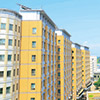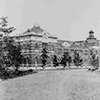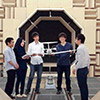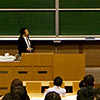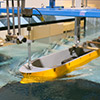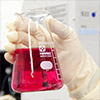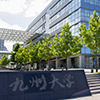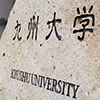Nuclear Fuel Cycle Engineering
Department of Applied Quantum Physics and Nuclear Engineering, Faculty of Engineering
Department of Applied Quantum Physics and Nuclear Engineering, Graduate School of Engineering
Department of Applied Quantum Physics and Nuclear Engineering, School of Engineering
To establish advanced nuclear fuel cycles, innovative nuclear fuels based on zirconia doped with Pu and minor actinides have been developed because of their advantages for nuclear nonproliferation. Also, for commercial nuclear fuels, i.e., UO2 and MOX, their physicochemical properties are studied in terms of high-performance and -safety by using theoretical (ab initio calculation, classical MD simulation and CALPHAD) and experimental approaches.
Multi-barrier system for geological disposal of HLW in Japan consists of HLW glass, overpack of carbon-steel, buffer material of bentonite, concrete materials and geological formations. For evaluation of long-term performance of the disposal system, migration behavior of radionuclides in these barrier materials is one of important matters to be evaluated, and we are developing a greater understanding of the glass dissolution/alteration and the radionuclide migration in buffer material of bentonite based on fundamental principles of material science, geochemistry, radiochemistry for reliable modeling.

(a) HOMO and (b) LUMO of Th(H2O)8 hydrated complex, where light-blue: thorium; red: oxygen; white: hydrogen. These molecular orbitals were calculated by Gaussian09.
Staff
Assoc.Prof. Yaohiro Inagaki
Asst.Prof. Tatsumi Arima
The Main Research Topics
- Research on innovative nuclear fuels
- Research on radioactive waste management
- Research on advanced nuclear fuel cycle systems


